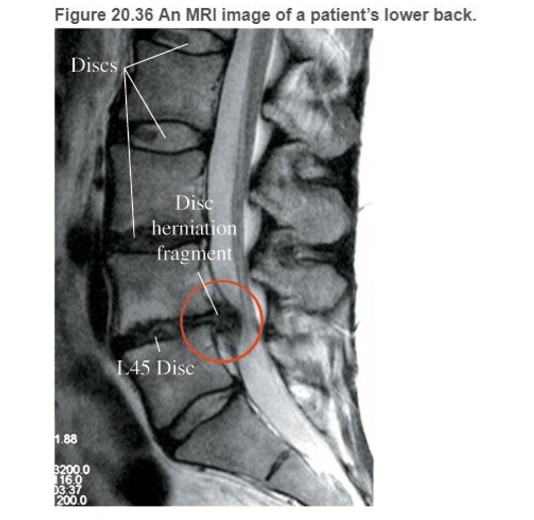
Concept explainers
BIO Power lines—do their magnetic fields pose a risk? Power lines produce both electric and magnetic fields The interior of the human body is an electrical conductor, and as a result, electric fields are greatly reduced in magnitude within the body The electric fields inside the body from power lines are much smaller than electric fields normally existing in the body.
However, magnetic fields are not reduced in the body Earth's magnetic field, approximately
The magnetic field from a high-voltage power line located 40 m above the ground carrying a 100-A current is much smaller than Earth's
Wires that provide electric power for household appliances also produce electric and magnetic fields The current in the wire for a 500-W space heater is about 5 A With the wire located several meters from your body the magnetic field of such an appliance is somewhat smaller than Earth’s magnetic field By comparison laboratory mice lived for several generations in 0.0010-T magnetic fields (20 times Earth’s magnetic field) without any adverse effects.
During the last three decades, electric power use has increased the magnitudes of the

Leukemia rates have declined in recent years, whereas the magnitudes of the B fields created by power lines in our environment have increased significantly. Why does this not necessarily rule out power line magnetic fields as a contributing cause of leukemia? a Correlation studies have no cause-effect relationship.
b. There is no known mechanism for power line magnetic field-induced deaths.
c. The power line magnetic fields cannot penetrate clothing and skin. d Perhaps the power line magnetic field-induced cancers have increased from 0.001 to 0.025 of the cases and other causes have decreased.
e. a, b, and d
f. All of the above
Want to see the full answer?
Check out a sample textbook solution
Chapter 20 Solutions
COLLEGE PHYSICS:VOL.1
Additional Science Textbook Solutions
Brock Biology of Microorganisms (15th Edition)
Genetic Analysis: An Integrated Approach (3rd Edition)
Campbell Biology: Concepts & Connections (9th Edition)
Human Biology: Concepts and Current Issues (8th Edition)
Microbiology: An Introduction
Campbell Essential Biology (7th Edition)
- 8. With the aid of a diagram draw the following electric circuit and use the resistor as the load, (a) Closed circuit (b) Open circuitarrow_forwardLab 8 Part 3 PHET Wave Interface simulation. I am having trouble with this part of the lab.arrow_forwardMick and Rick are twins born on Earth in the year 2175. Rick grows up to be an Earth-bound robotics technician while Mick becomes an intergalactic astronaut. Mick leaves the Earth on his first space mission in the year 2200 and travels, according to his clock, for 10 years at a speed of 0.75c. Unfortunately, at this point in his journey, the structure of his ship undergoes mechanical breakdown and the ship explodes. How old is Rick when his brother dies?arrow_forward
 College PhysicsPhysicsISBN:9781938168000Author:Paul Peter Urone, Roger HinrichsPublisher:OpenStax College
College PhysicsPhysicsISBN:9781938168000Author:Paul Peter Urone, Roger HinrichsPublisher:OpenStax College Physics for Scientists and Engineers, Technology ...PhysicsISBN:9781305116399Author:Raymond A. Serway, John W. JewettPublisher:Cengage Learning
Physics for Scientists and Engineers, Technology ...PhysicsISBN:9781305116399Author:Raymond A. Serway, John W. JewettPublisher:Cengage Learning Physics for Scientists and Engineers: Foundations...PhysicsISBN:9781133939146Author:Katz, Debora M.Publisher:Cengage Learning
Physics for Scientists and Engineers: Foundations...PhysicsISBN:9781133939146Author:Katz, Debora M.Publisher:Cengage Learning College PhysicsPhysicsISBN:9781305952300Author:Raymond A. Serway, Chris VuillePublisher:Cengage Learning
College PhysicsPhysicsISBN:9781305952300Author:Raymond A. Serway, Chris VuillePublisher:Cengage Learning College PhysicsPhysicsISBN:9781285737027Author:Raymond A. Serway, Chris VuillePublisher:Cengage Learning
College PhysicsPhysicsISBN:9781285737027Author:Raymond A. Serway, Chris VuillePublisher:Cengage Learning





